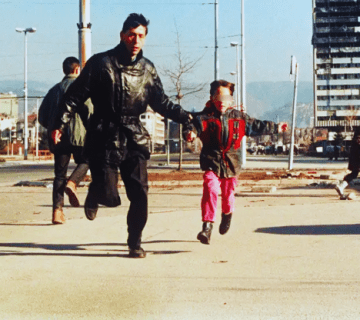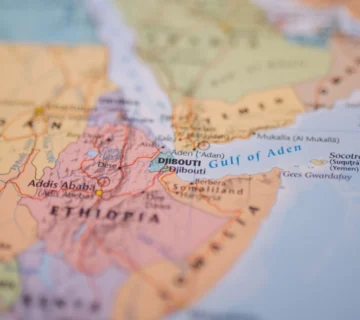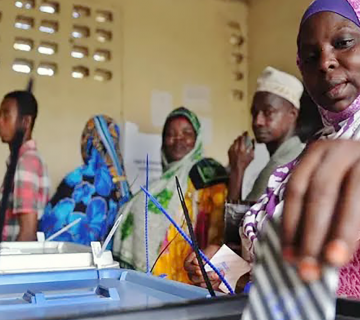In 2018, the world applauded the hand-shake between Ethiopia’s Prime Minister Abiy Ahmed and Eritrea’s President Isaias Afwerki, terming it as a new era of Horn of Africa peace. Abiy was later awarded the Nobel Peace Prize for that rapprochement. Yet, just seven years later, the prospect of renewed conflict between Ethiopia and Eritrea looms large. Eritrea seceded from Ethiopia in 1993, a separation which stripped Ethiopia of its only direct access to the Red Sea a strategic blow still felt in Addis Ababa. The ensuing 1998-2000 border war cost over 70,000 lives and entrenched mutual mistrust. The 2018 peace deal was thus ambitious, restoring diplomatic relations, reopening borders and presenting the notion of cooperation rather than confrontation. But while the symbolism was strong, the institutional foundations of that peace remained weak. Deep ethnopolitical grievances, unresolved regional rivalries and underlying strategic competition quietly endured. The Nobel-recognised pact was largely symbolic rather than substantively meaningful for sustainable reconciliation.
Alliances and Strategic Re-alignments
The alignment between Ethiopia and Eritrea took a dramatic turn in 2020 when the two countries jointly carried out military operations against the Tigray People’s Liberation Front (TPLF) in northern Ethiopia. The military operations, which are estimated to have killed around half a million civilians, strengthened Eritrea-Ethiopia military and security partnership, but also sowed seeds for a future fall-out when Ethiopia signed the Pretoria Agreement in 2022 with the TPLF without Eritrea. Asmara viewed the accord as undermining its strategic objective of permanently eliminating the Tigray People’s Liberation Front (TPLF). For President Isaias Afwerki, negotiating with the TPLF rather than destroying it undermined Eritrea’s wartime sacrifices and left a potential threat intact.
The agreement’s failure to dismantle the TPLF entirely reinforced Asmara’s perception of unfinished business. Eritrean forces consequently refused to withdraw from occupied territories in Tigray, maintaining control over key areas and restricting local movement. Eritrea has also been accused of attempting to undermine the peace process by exploiting divisions within the TPLF and ensuring Ethiopia’s stability remains fragile. Meanwhile, landlocked Addis Ababa began prioritising new strategic horizons, especially sea access.
The Red Sea Imperative: Access, Ambition and Threat
At the heart of current tension, lies Ethiopia’s unabated pursuit of a Red Sea foothold. With a population exceeding 130 million, Addis Ababa views sea access not as a luxury but as existential. Abiy’s government has repeatedly declared that Ethiopia “cannot stay locked up”.
However, for Eritrea, this ambition triggers alarm bells. President Isaias and his government interpret Ethiopia’s sea access goal whether through Eritrean territory, Somaliland, or Sudan as encroachments on their sovereignty. In early 2025 Eritrea and Egypt issued a joint statement asserting that Red Sea security must remain the domain of coastal states, implicitly targeting Ethiopia’s moves. Crucially, Eritrea does not deny Ethiopia access to ports. Ethiopia also currently uses Djibouti and Sudanese outlets. Its red line is sovereignty loss or attempts to annex Eritrean territory.
Regional Spill-Overs and the Risk of a Wider Flashpoint
The bilateral tensions between Ethiopia and Eritrea cannot be viewed in isolation. They intertwine with broader Horn of Africa dynamics: the conflict in Sudan, Somaliland’s uncertain status, Egypt’s Red Sea interests and the interplay of proxy actors. A direct Ethiopia-Eritrea conflict would not remain a bilateral skirmish, it risks igniting multi-front instability.
Eritrea has reportedly mobilised reserves, held missile tests and tightened travel restrictions. Meanwhile, Ethiopia has deployed troops toward its border with Eritrea. Although Prime Minister Abiy publicly ruled out war in March 2025, stating that “Ethiopia does not have any intention of engaging in conflict with Eritrea for the purpose of gaining access to the sea”, the deeper logic of deterrence suggests the groundwork for conflict remains.
Internal Fragility in Ethiopia
Ethiopia is not simply a potential aggressor; it is also internally stressed. The unresolved conflicts in Amhara including the Fano militia, Oromia, and the residual instability in Tigray stretch federal forces thin and consume national bandwidth. Addis Ababa may find it difficult to fight on two fronts domestic and external. These domestic pressures make the Ethiopia-Eritrea standoff riskier: a miscalculation could turn into full-blown war, while the capacity to manage or de-escalate may be diminished.
The Shifting Strategic Landscape
The Ethiopia–Eritrea standoff reflects a broader recalibration of power across the Horn of Africa. Both governments are navigating new pressures that extend far beyond bilateral grievances. For Ethiopia, the quest for maritime access is intertwined with its vision of regional leadership, economic recovery, and internal legitimacy. Control of trade routes and sea corridors has become a symbol of sovereignty and survival for Addis Ababa’s political class. For Eritrea, whose identity and resilience were built around hard-won independence, any perceived threat to territorial integrity is intolerable.
This mutual insecurity has created a cycle of deterrence and suspicion, with each side interpreting the other’s moves as aggressive rather than defensive. In this context, the Horn of Africa risks becoming the next theatre where domestic fragilities, historical mistrust, and geostrategic ambitions collide. Without a coherent regional framework to manage Red Sea security and maritime access, the likelihood of miscalculation remains high. The coming months will therefore test whether regional leaders can shift from competitive nationalism to pragmatic coexistence a transition that will determine whether the region moves toward renewed conflict or cautious stability.
Conclusion
The journey from the Nobel Peace Prize to near-war status between Ethiopia and Eritrea underscores how fast alliances can fracture when structural issues remain unaddressed. Ethiopia’s land-locked imperative and Eritrea’s existential sovereignty concerns form a combustible mix. Yet despite the alarm bells, war is not pre-ordained careful diplomacy, strategic clarity and regional engagement could still avert the worst. For stakeholders, the key task is to help steer the conflict toward the managed-stalemate or diplomatic-access scenario and avoid the nightmare of full-scale war.
Photo Credits: Reuters
Bravin Onditi is a Researcher at the HORN Institute.



